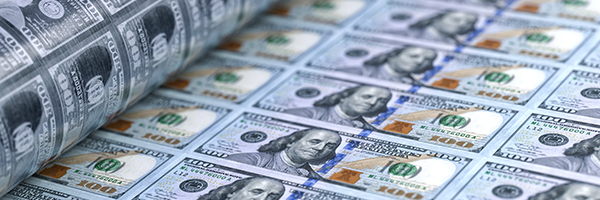
Watch my new YouTube video: “Amazon miss is a big deal…for all stocks”
I’m starting up my videos on JubakAM.com again–this time using YouTube as a platform. My forty-fourth YouTube video “Amazon miss is a big deal…for all stocks” went up today.

I’m starting up my videos on JubakAM.com again–this time using YouTube as a platform. My forty-fourth YouTube video “Amazon miss is a big deal…for all stocks” went up today.

This COMPLETE version consolidates all the 3 parts, 3 buckets and seven picks posted serially for this Special Report

With the recent retreat in the price of 10-year Treasuries and the rise in the yield on these long-term instruments (to a whopping 1.36% as of today, August 12) I think this is a decent time to start buying to build that bond ladder for your long-term bucket.

The Consumer Price Index climbed 0.5% in July. That was in line with Wall Street expectations. And down from the 0.9% gain in the inflation index reported for June. That was enough to send stock prices higher as investors and traders decided the data supports the Federal Reserve’s view that the recent spike in inflation will be temporary. Year over year the New Consumer Price Index is up 5.4%, a 30-year high.

Back in 2018 the Federal Reserve started to run down its valance sheet out of concern that its asset pile had grown so large that the central bank was in danger of becoming the market for things like Treasuries and mortgage-backed assets. (For some of the dangers in that state see the Bank of Japan, which does “own” the market for government debt.) Over the next two years the Fed ran its assets down to $3.75 trillion from $4.4 trillion. If you haven’t been paying attention, you might have missed the steady increase in the Fed’s holdings to a whopping $8.2 trillion in Treasury bonds and mortgage-backed assets.

Today I’m going to give you some picks and some rules for finding more candidates for the middle bucket, the 5-year bucket. In terms of the mechanics of a three-bucket income investment system, this middle bucket is critical since it the mechanism for turning the price appreciation of the long-term bucket into the cash income of the short term bucket. And it has to accomplish this task without taking on inordinate amounts of risk since a five-year holding period doesn’t allow a lot of time to recover losses from mistake.

I wouldn’t call it the consensus yet, but financial market thinking seems headed toward a belief that the end of the Fed’s $120 billion a month in purchases of Treasuries and mortgage backed assets won’t be a big deal. Certainly not enough to upset the bond market or produce another temper tantrum. The belief hinges on forecast of demand and supply that sees them roughly in balance even after the Fed stops its buying. An end to Fed purchases would be a significant hit to demand. But it looks like the U.S. Treasury will be cutting back on bond auctions as about the same time. And that would leave demand and supply roughly where they are now.

No change. But change coming someday. (Not soon, though.) That was the message from today’s meeting of the Federal Reserve’s Open Market Committee.

Today, I’m going to begin to give you specific picks so you can start to fill out the three buckets I recommended in Part 1 of this Special Report. Filling the long-term bucket is probably the most fun–who doesn’t like imagining the wealth that will roll in from finding the next Nvidia (NVDA) or from investing in the current Nvidia. The short-term bucket is the most challenging since it requires you to confront the current paucity of assets throwing off yields of even 2% head on.But let’s start there since the other buckets hang off the short-term bucket.

The rise in the long end of the Treasury market resumed this week after inflation expectations hit a multi-year high. The Federal Reserve didn’t help. After its Wednesday meeting Chair Jerome Powell stressed that the central bank views any jump in price pressures as fleeting and it won’t be dialing back crisis-level monetary support any time soon. Short interest in the $12 billion iShares 20+ Year Treasury Bond ETF (TLT) rose to 25% of shares outstanding this week. That’s the highest level since early 2017, according to data from IHS Markit. Investors and traders continue to dump the long Treasury and the ETF: the iShares 20+ Treasury ETF has posted outflows every day this week, putting it on track for weekly withdrawals of over $1 billion. According to Bloomberg that’s the worst stretch since November. The ETF is down 12% in 2021.

Nothing to see here. Move along. In the minutes from its March 16-17 meeting, released today April 7, Federal Reserve officials told the financial markets “that it would likely be some time until substantial further progress toward the [Open Market] Committee’s maximum-employment and price-stability goals would be realized.” And, the minutes went on, “a number of participants highlighted the importance of the Committee clearly communicating its assessment of progress toward its longer-run goals well in advance of the time when it could be judged substantial enough to warrant a change in the pace of asset purchases.”

It worries me when any asset moves too quickly–either up or down. Long-term rallies pauses for a breather from time to time. So do big moves to the down. Like that we’re seeing at the long end of the Treasury bond market right now. The yield on the 10-year Treasury closed at 1.71% today, up another 7 basis points on the day. And now up 42 basis points in one month.